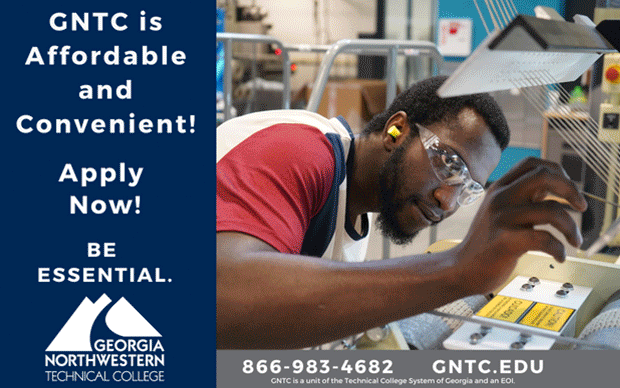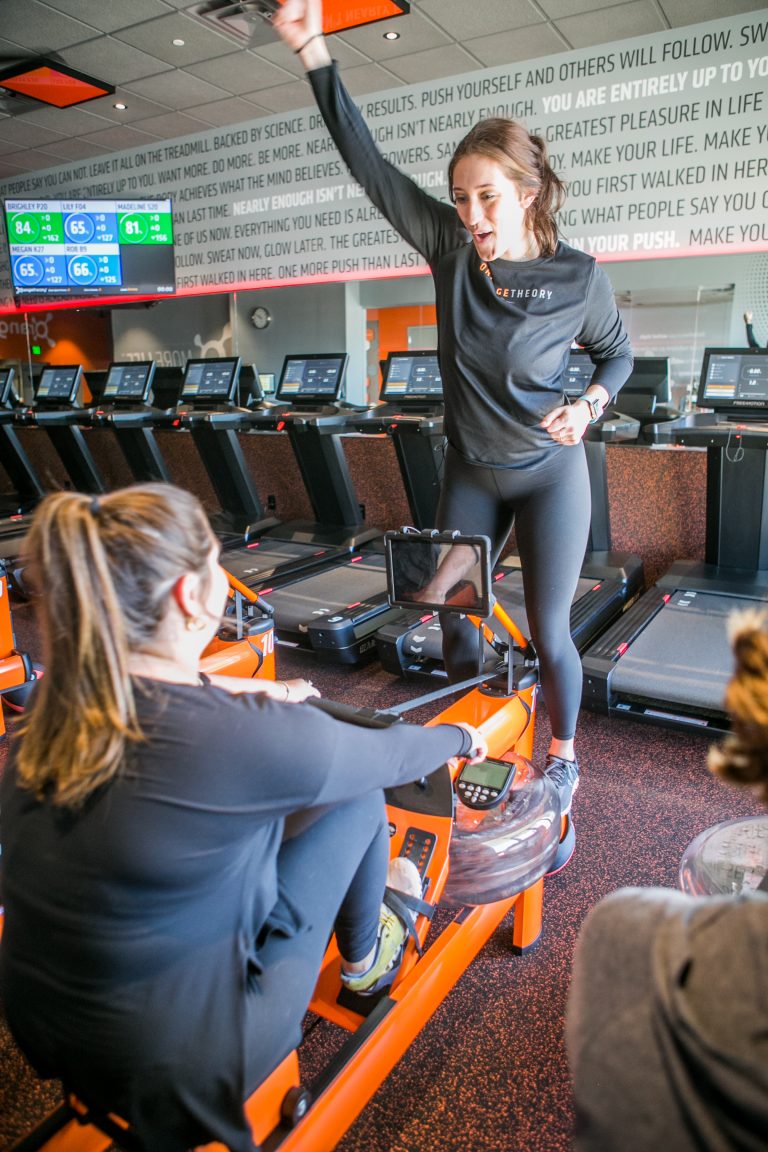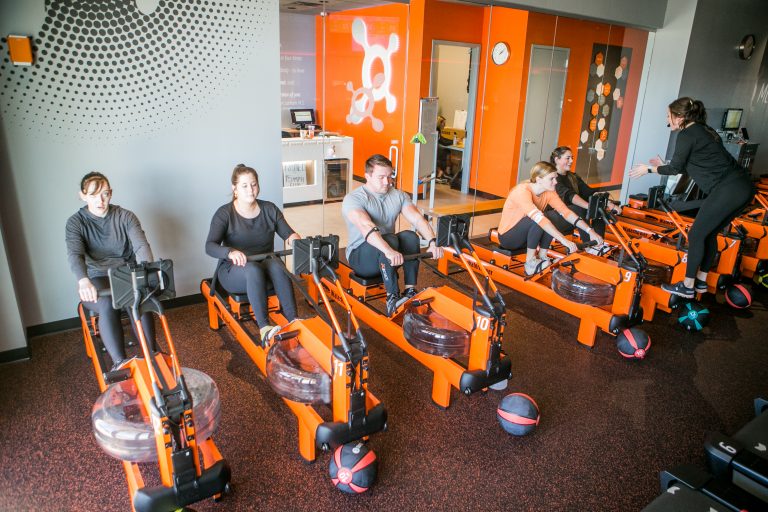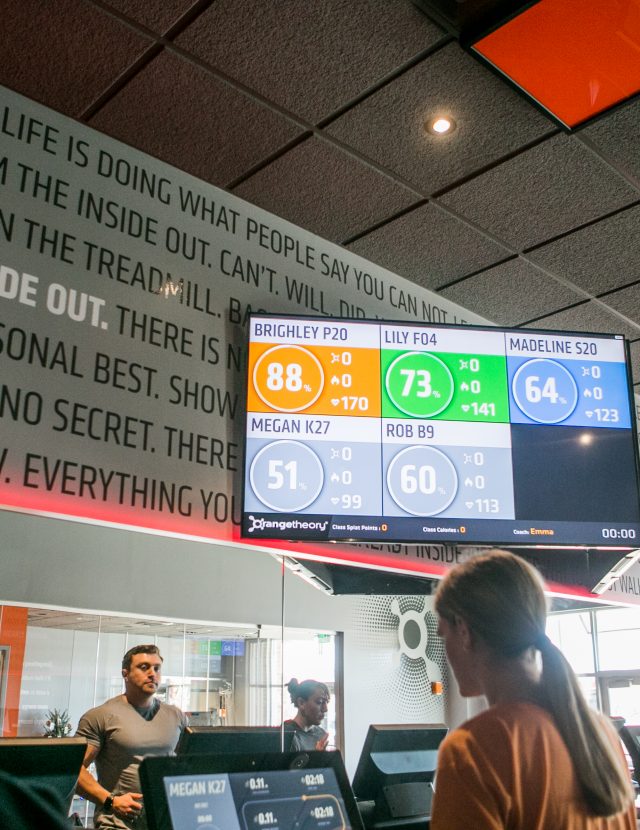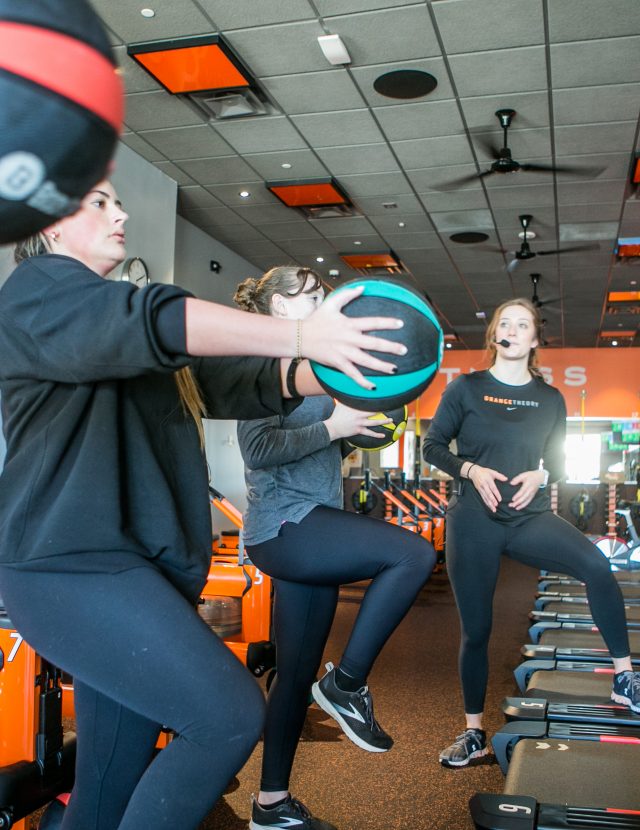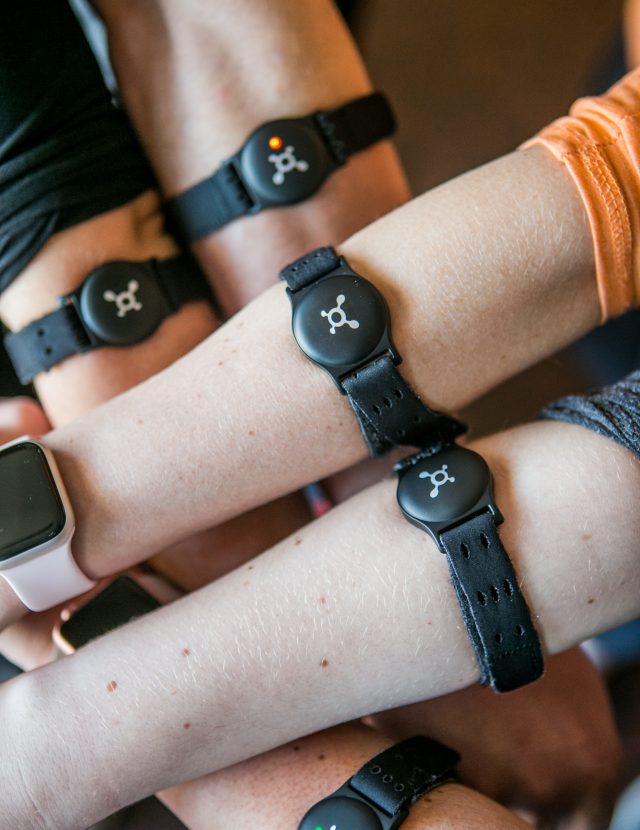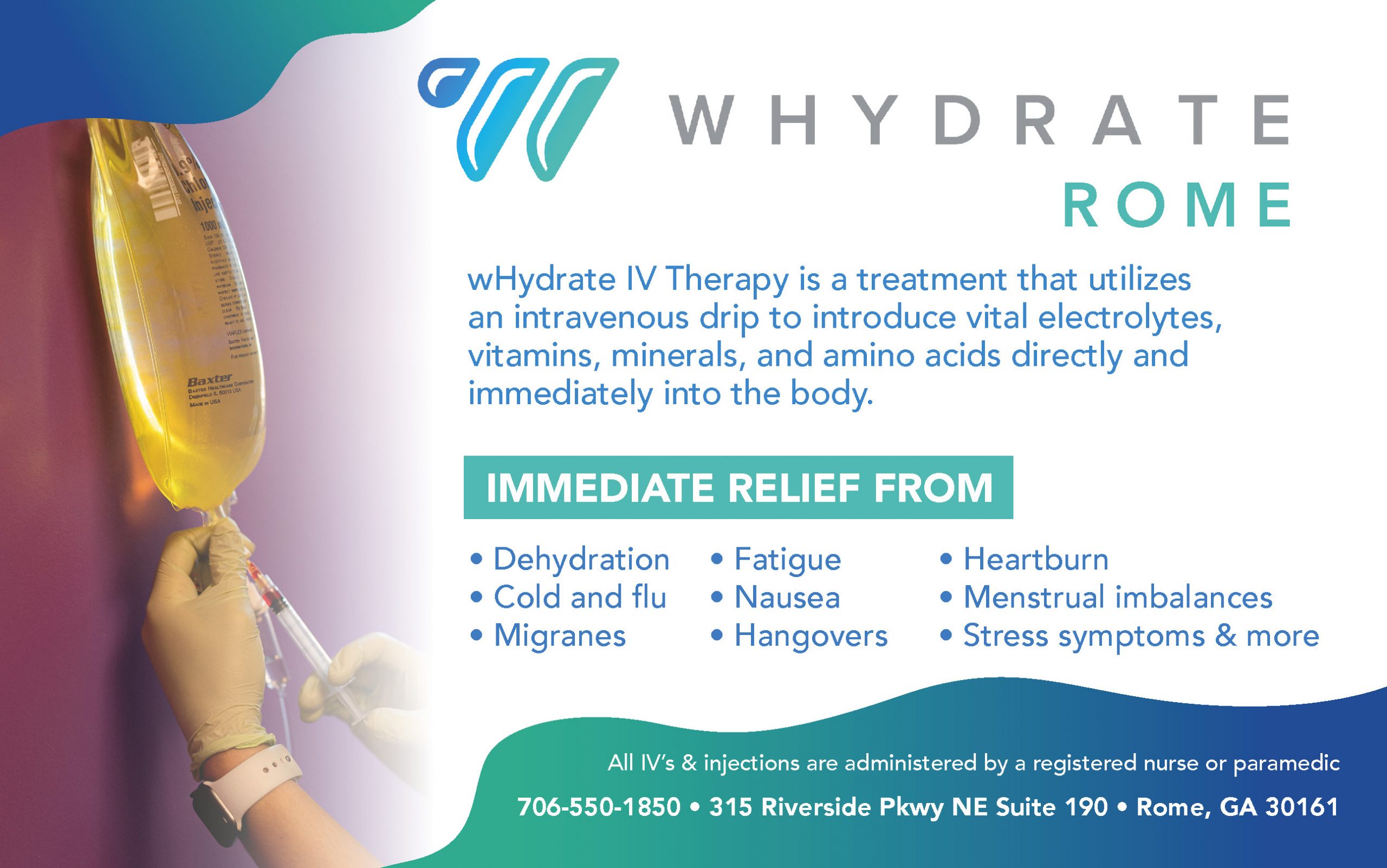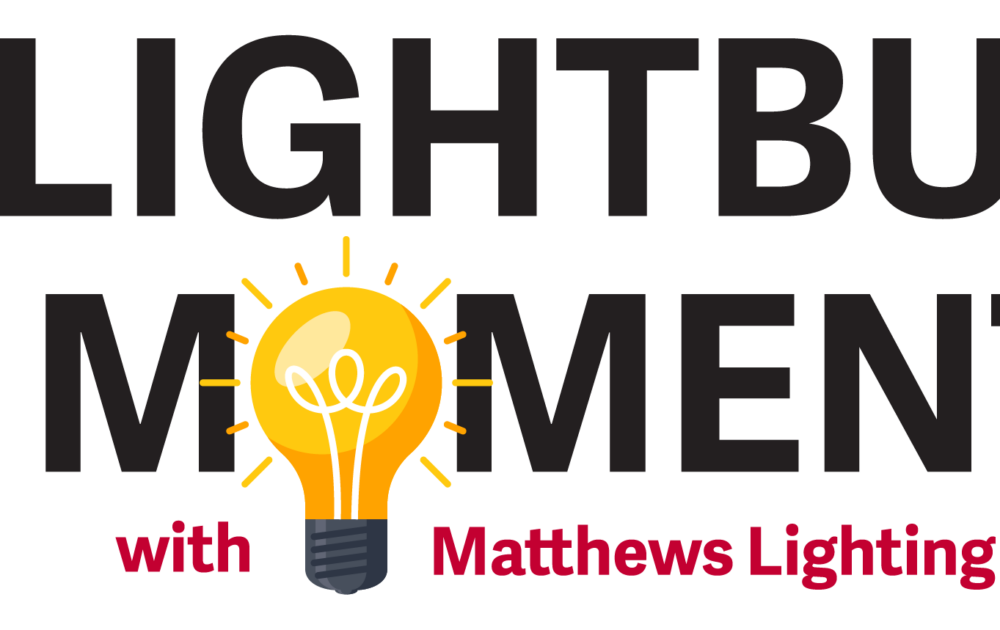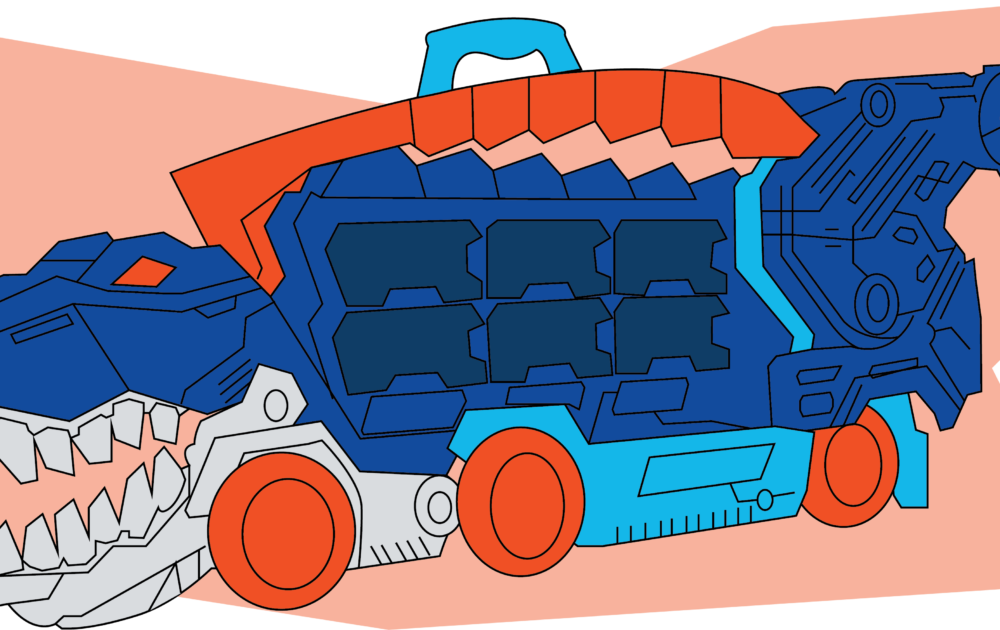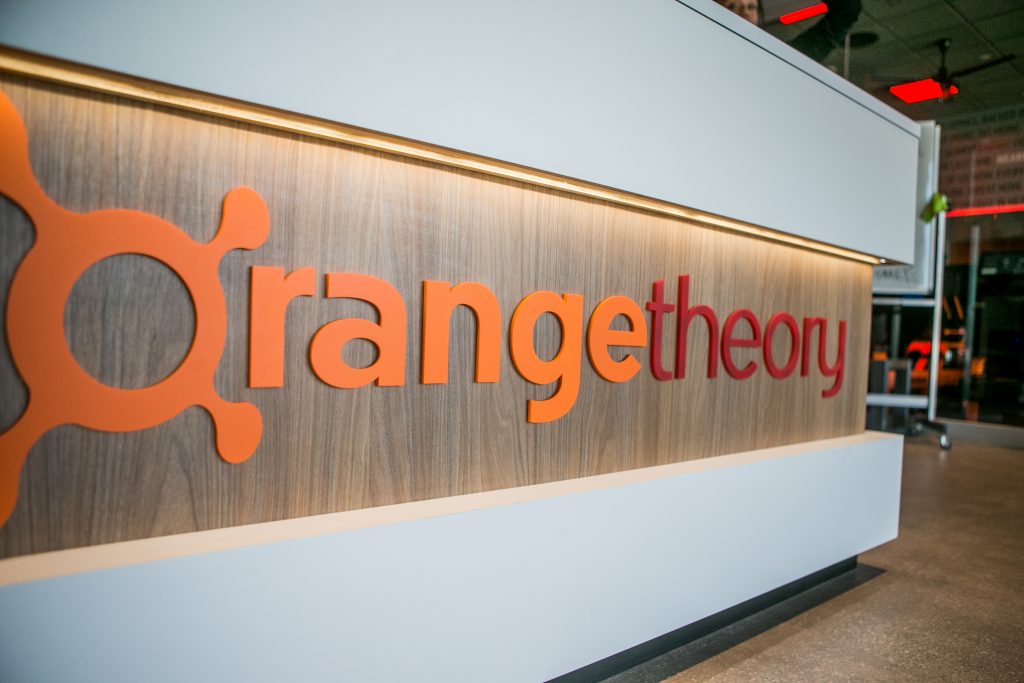
Photos Rob Smith
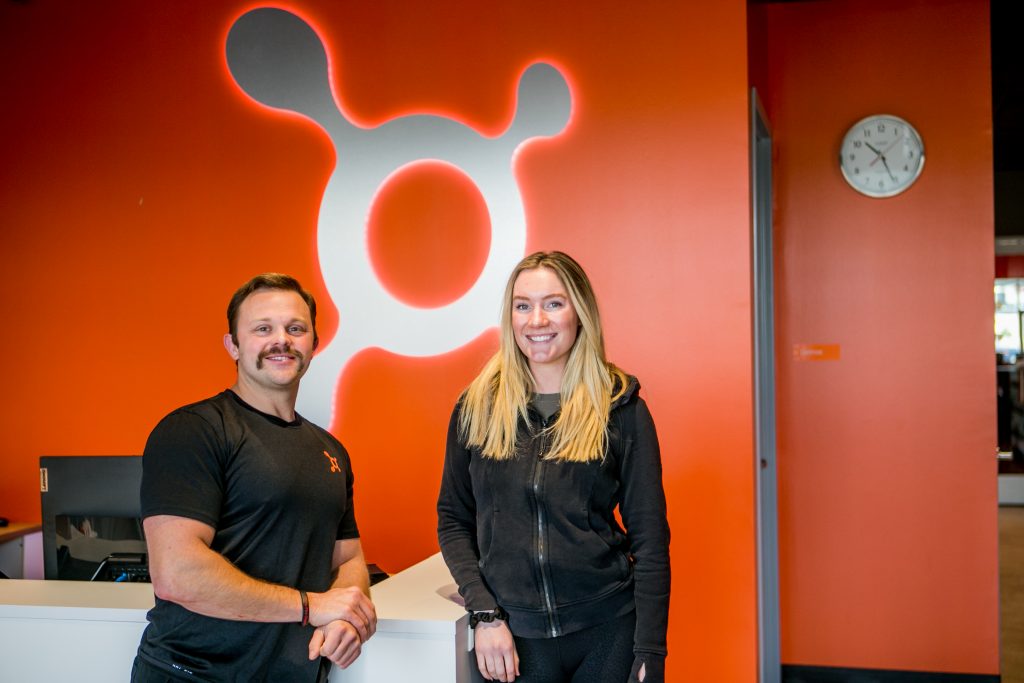
Kipp Buford & Jess Frank
Question: What is the meaning behind the name Orange Theory?
Buford: Our program is heart-rate-based interval training. There are five different heart rate zones: resting, easy, a little harder, difficult, and maximum effort. Each of those zones is shown in the different colors you see on the monitors. We have these monitors on all our machines and on the screen. The purpose of tracking your heart rate is to take full advantage of your workout, helping you know when to push harder and when you need to take a break and recover.
Our goal is to spend between twelve and twenty minutes in the orange and red zones to experience the EPOC effect. Every minute spent in these zones is considered a splat point. It’s the sound of fat cells exploding, that’s the logo for the gym, and sums up what we are about here.
Question: Twelve minutes sounds really specific and your approach is very data-driven. What exactly is the EPOC effect, why is it important, and how do you achieve it in your group sessions?
Frank: EPOC stands for excess post-exercise oxygen consumption. Basically, after accumulating twelve minutes in the orange zone, which is 84%-91% of maximum heart rate, your body has expended its reserved energy and it has to work to repay the energy. This is what we call an oxygen debt, and your body will work hard to repay this oxygen debt for 24 to 36 hours after your workout. The more energy you use during your workout the more calories you will burn during your recovery.
That being said, we don’t aim to work in the orange and red zones for the entire class, this would be too exhausting and a risk for overtraining. Essentially there are two types of training: steady-state and HIIT (High Intensity Interval Training). With steady-state training it is very difficult for your body to hit that oxygen debt; whereas with a HIIT workout when we give our bodies time to recover then we can grab a little more energy, and then recover again, and so on.
Think of it this way: steady-state is a thirty-minute jog in which your body never achieves a high level of intensity, and HIIT is a thirty-second dead sprint followed by immediate recovery, then again with the sprint, you can hit that burst for another 30 seconds then again recovery on the other side. Your metabolism is revved for hours after you leave the gym, helping you burn calories well after you have left Orange Theory. I know it is a lot of science, but that is exactly why people see such amazing results.
Question: Can anyone take part in your programming regardless of fitness level?
Buford: When someone joins our program, the first thing we do is introduce them to their coach, the gym, and the heart rate monitoring equipment. It can all seem a little overwhelming at first when you walk in and you see the rows of treadmills and row machines, but it’s new to everyone.
We just opened up a couple of months ago, and we are here to make everyone feel comfortable. Our programming is developed in a way that meets individuals where they are in their fitness level. This is a judge-free zone, which seems to resonate with everyone. We have seen a real community development within the classes. Friendships are being made and people are breaking through their personal limitations.
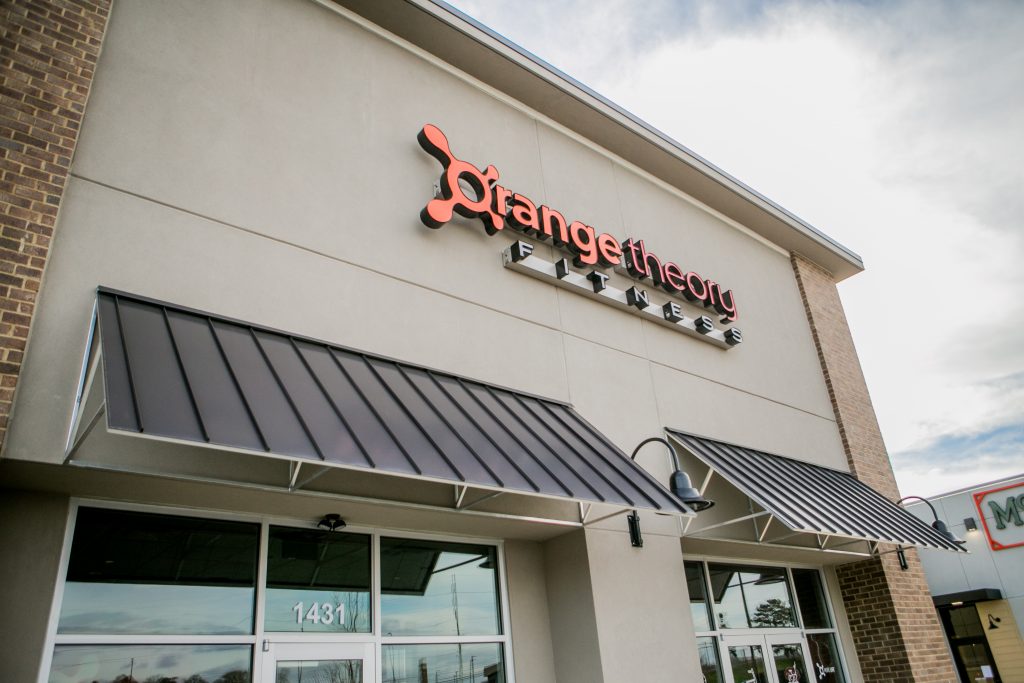
Question: How can Orange Theory Fitness help people stick to their New Year’s resolutions of getting in better shape?
Frank: At first glance, you walk in and see the cardio equipment and the weights, you think that this is just like any other gym. What makes us unique is the heart rate monitors and the tools to self-assess your progress. People can see—in real time—how they are improving.
They track their data and see that they can work harder, longer, smarter. These gains aren’t just muscle development or body mass changes, but it is heart health. Our members see greater endurance, energy, and strength that translates into all areas of their daily living. That is the best indicator that someone will stick to their goals when they see that it is making a genuine improvement in their lives.
The second reason Orange Theory Fitness can help people stick to their goals goes back to our sense of community. There is natural accountability when people are looking to see their workout buddy joining them in their class. You don’t want to let them down, and you don’t want to miss out on the fun.
Question: Personally, what do you consider has been the greatest motivator in your personal fitness goals?
Buford: I recognize as a trainer that everyone has different motivators. Personally, for me, fitness has always been a part of my life, even as a kid I saw it as an escape and a way to deal with stress. When I was younger sports played a big part in my life, as an adult,
I joined the fire department and looked at my fitness as a way to be ready to help someone when they are having their worst day. So, I push each day to be that much better or that much more prepared to help someone in need. Everyone looks to fulfill their purpose, you know?
Frank: For me, I watched so many members of my family struggle with health problems. My mom has heart issues, and my dad also has heart problems with high cholesterol. Fitness was never really a part of their lives. I realize that I have to take care of my body, I need to be healthy so that I don’t have the same issues. For me, fitness is not so much about losing weight; it’s really about staying healthy as I get older.
You can visit Orange Theory at:
instagram.com/orangetheoryrome/
1431 Turner McCall Boulevard
Rome, GA 30161


